10 Things You Need to Grow Healing Mushrooms at Home
Jul 09, 2023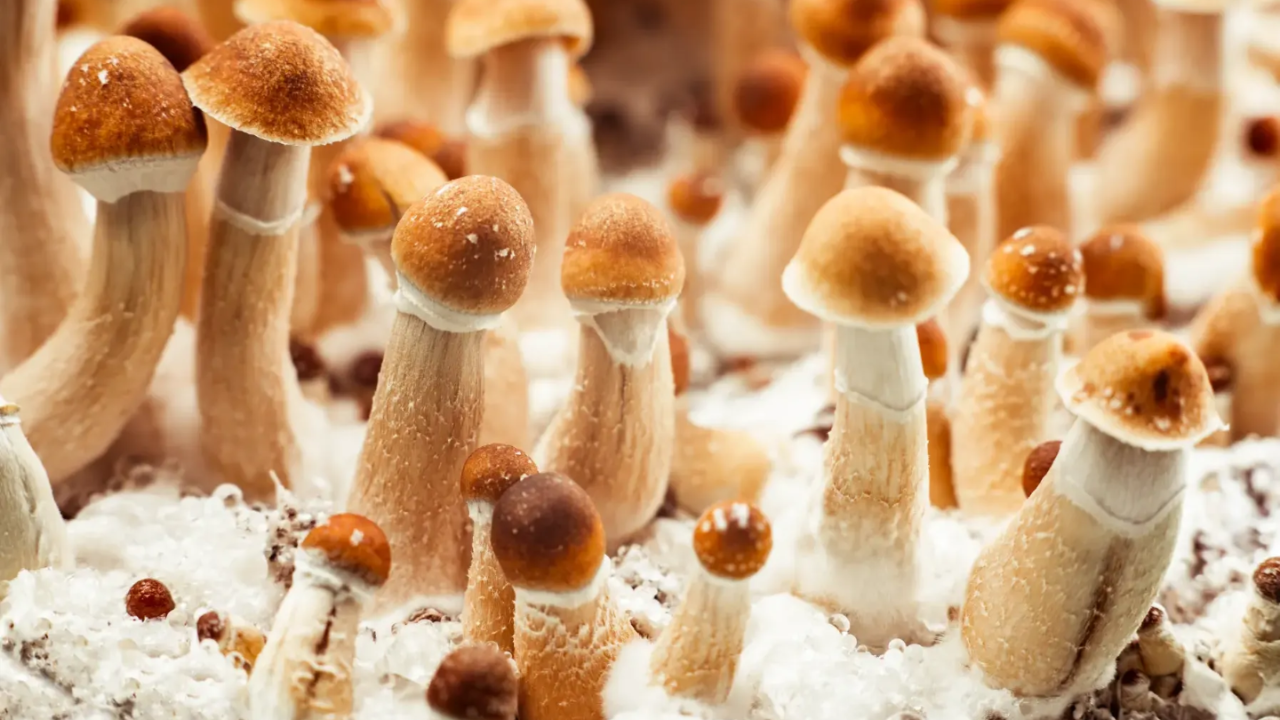
Getting your first grow on needs less equipment than you might think. Here are the top 10 things you'll need to get growing fast at home. You can grow mushrooms in as little as 6-10 weeks with these essentials - and you can do it discreetly if you need to.
Disclaimer: Fungi Tribe does not condone illegal activity. All images below show oyster mushrooms, grown on my course: "Growing Mushrooms for Healing and Transformation". It is possible to grow other types of mushrooms using these methods. It is your responsibility to check your country's laws before choosing which mushrooms to grow.
1. Liquid Culture or Spore Syringe
Liquid cultures or spore syringes are where your growing journey begins. You can use either: Liquid culture is alive with mycelium while spore syringes contain spores that will grow into mycelium. In most countries spore syringes are widely available for microscopy purposes. Make sure you can get a syringe for the type of mushroom you want to grow, and check your country's laws before using it to grow mushrooms.
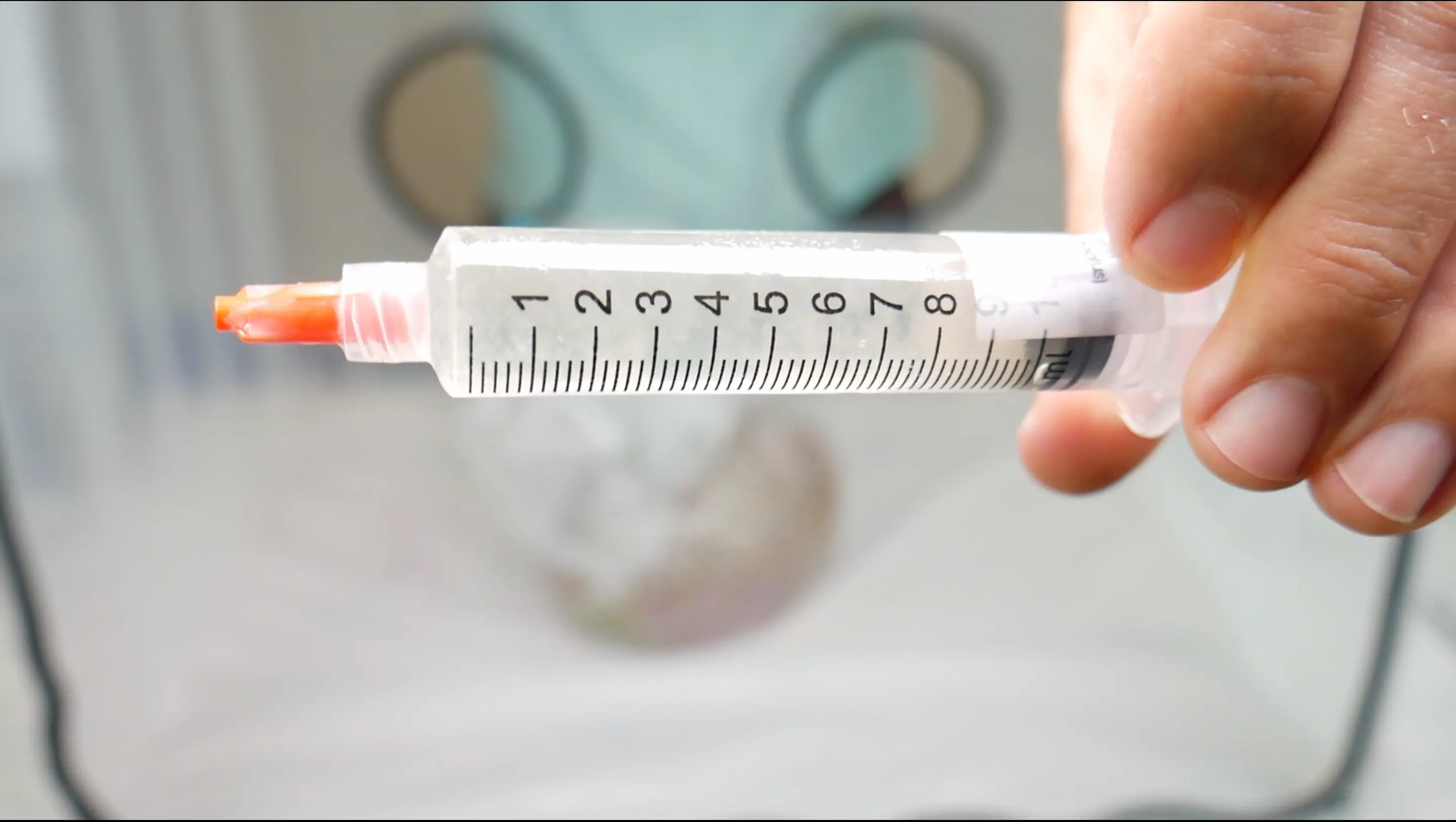 (picture: liquid culture before inoculation)
(picture: liquid culture before inoculation)
2. Sterile Grain
This is how you make your mushroom 'seeds'. All you need is a bag or jar of sterile grain, which has been heated to high temperatures to kill off contaminants. You can buy sterile grain online from mushroom shops. It usually comes in special bags kitted out with filter batches for air exchange and handy inoculation ports for injecting your liquid culture or spore syringe. When the grain is 'colonised' (totally white) it is known as 'grain spawn' and is ready to 'plant'.
Sterile grain is usually made with wheat, rye, millet or similar grains which are soaked, cooked and sterilised. It's pretty easy to make your own if you have a decent pressure cooker.
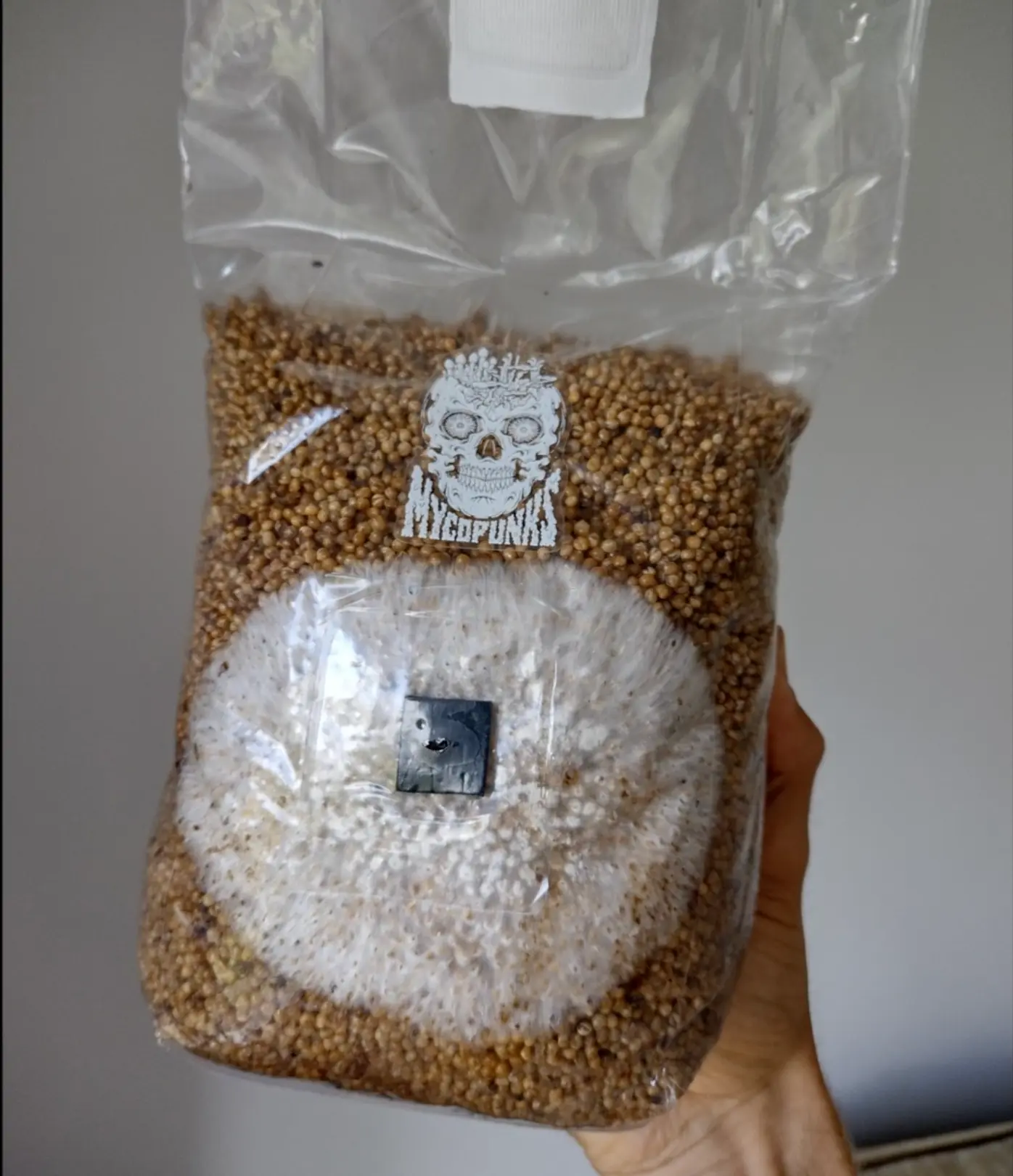 (picture: colonising sterile grain - see the white mycelium radiating outwards?)
(picture: colonising sterile grain - see the white mycelium radiating outwards?)
3. Substrate:
This is the 'soil' that the mycelium grows from. Growers mix their sterile grain (above) with a growing medium that the mycelium can 'colonise' before the mushrooms can fruit. There are many different types of substrate depending on which mushrooms you want to grow, but common substrates for growing mushrooms for microdosing are:
- Coconut Coir - The husks of coconuts sold as a bi-product of the coconut industry. This is very affordable and commonly sold as soil conditioner for plants
- Vermiculite - A naturally-occurring mineral widely used for water retention in gardening.
- Gypsum - Also known as calcium sulfate. It is often used in small quantities as a fertiliser in mushroom growing.
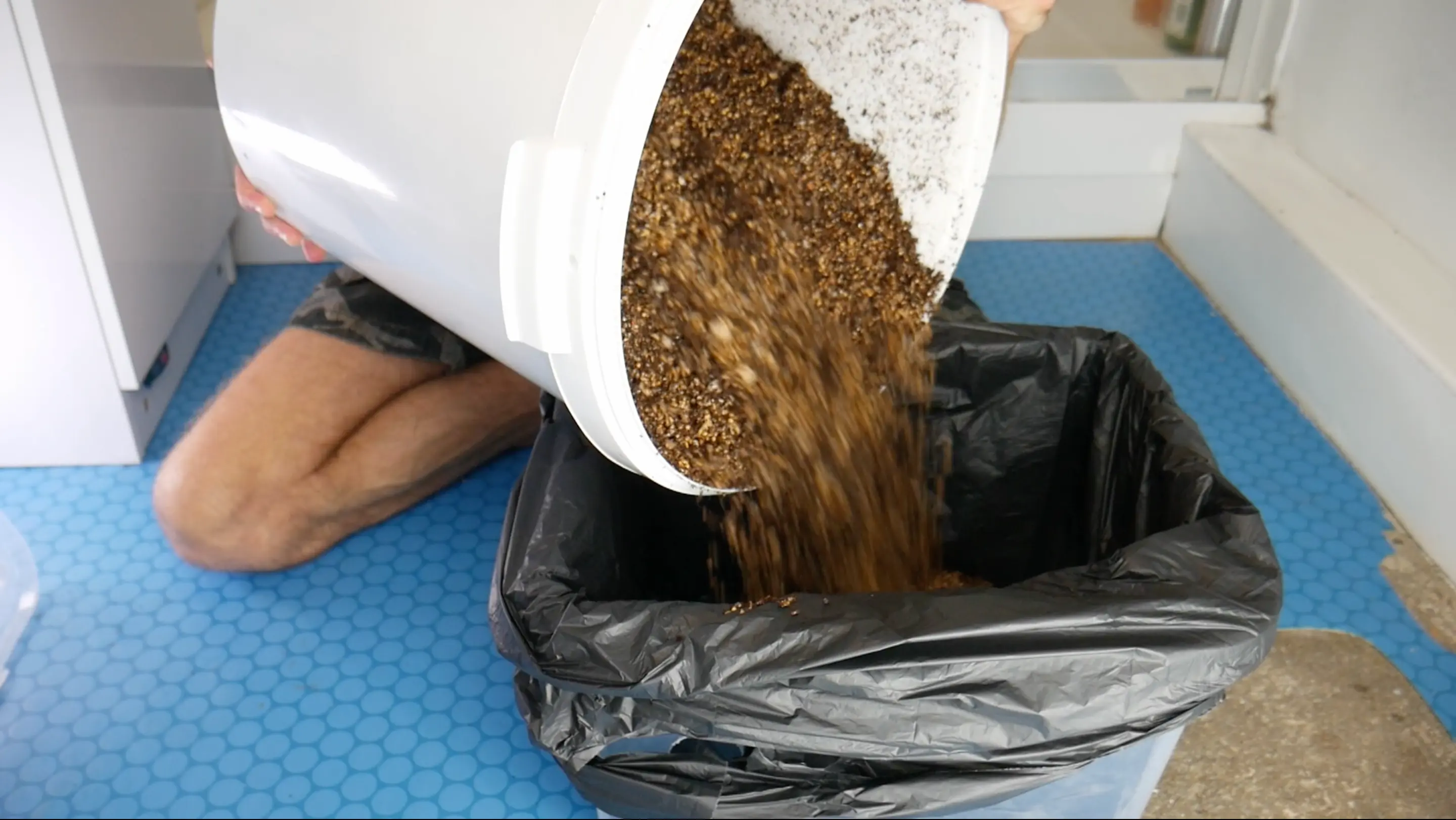 (picture: pouring grain spawn and substrate into a growing container)
(picture: pouring grain spawn and substrate into a growing container)
If you choose to grow using low-tech methods, you may also use:
- Brown rice flour - This can be bought or made by blending brown rice in a food processor.
NOTE: if you use low-tech methods you will NOT need sterile grain described above!
Mushroom substrates can be pasteurised using boiling water.
4. Growing and Mixing Containers:
It is common to use small, closed environments when growing mushrooms for microdosing. This enables you to control your growing and fruiting environment in a sealed-off space which is discreet and has a minimal impact on your home. Plastic tubs are ideal for this. The size of tub you use will depend on how much substrate and grain spawn you have. You will need to make a few holes in your tubs for air exchange (see picture below). With proper cleaning between grows, you can use your tubs for many years to come - imagine how many mushrooms that will be!
You will also need containers for pasteurising and mixing substrate. Ideally these will be PP5 plastic buckets with sealable lids. you could also use a big cooking pot with lid. (picture: a modified plastic tote - made into a 'monotub' for bulk cultivation)
(picture: a modified plastic tote - made into a 'monotub' for bulk cultivation)
5. Temperature and Humidity Control:
The ideal temperature range for growing mushrooms for microdosing is between 70°F and 78°F (21°C and 26°C). In a perfect world, your grow should 'colonise' (the dark stage) at around 75°F (24°C) and fruit at around 70°F (21°C). In reality, mushrooms fruit well in a normal warm house. You may want to consider using a greenhouse heater (above) in a cupboard for fast and efficient colonisation. (picture - grain colonising with a greenhouse heater)
(picture - grain colonising with a greenhouse heater)
Mushrooms thrive in a moist environment. You can achieve this by putting the right amount of water in your substrate when 'planting' your tubs. You can also regulate humidity (ideally to stay around 90%) while mushrooms are fruiting by misting the inside of your tubs with water 3-5 times a day.
If you're keen to automate your grows, you can also use a lizard fogger (see picture below), on a timer. Just make sure you keep your fogger clean!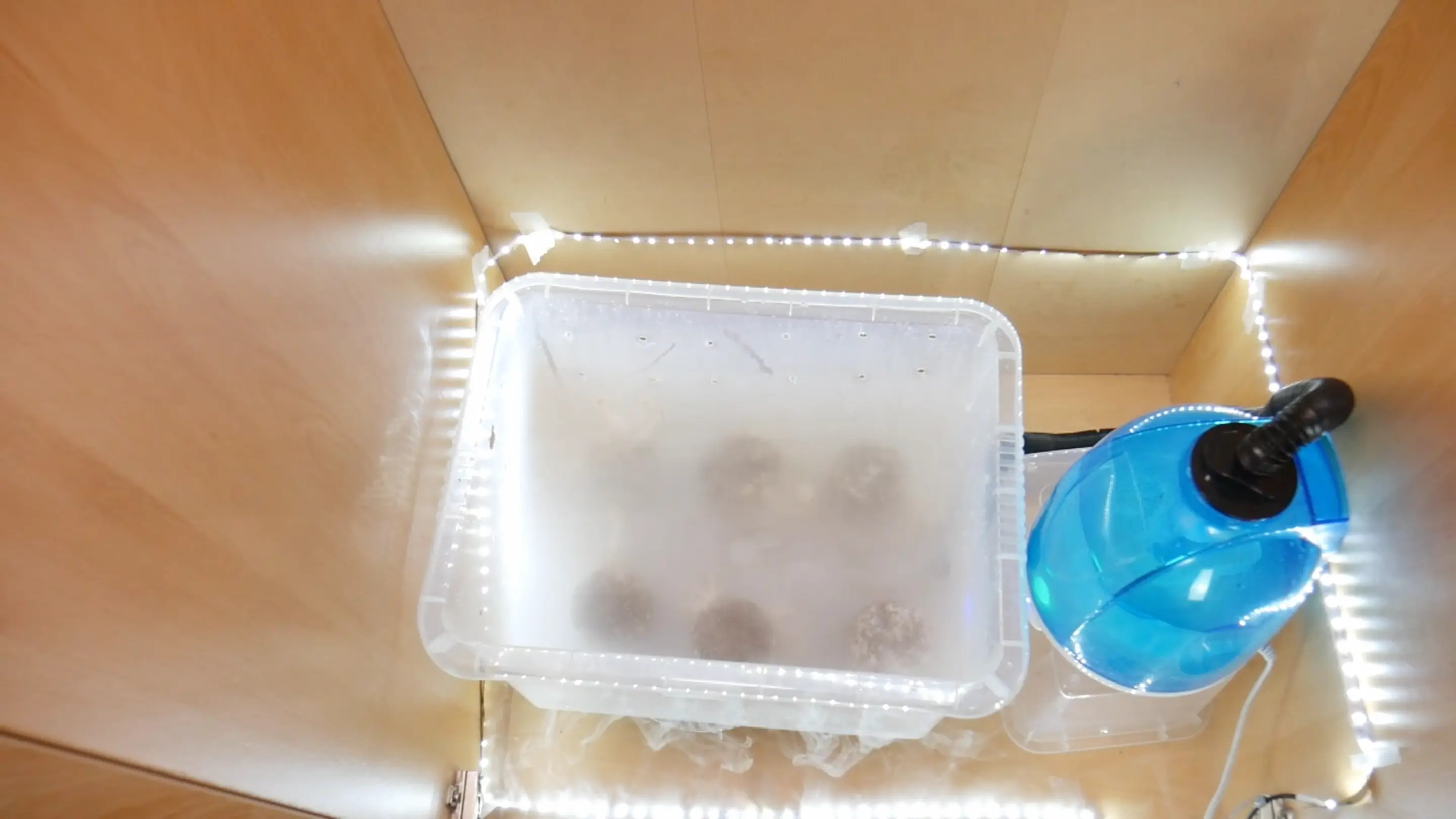 (picture: a lizard fogger and LED lights - a discrete automated grow)
(picture: a lizard fogger and LED lights - a discrete automated grow)
6. Light and Darkness:
Unlike plants, mushrooms do not get food from sunlight. They need less light than plants do - but it still acts an an important trigger for mushroom growth.
A small amount of ambient light in the room or a nearby window will do the job when mushrooms are fruiting. If growing discreetly, you can use LED strip lights under your bed or in a cupboard. In optimal conditions, your fruiting mushrooms will have 12 hours of light and 12 hours of darkness every day.
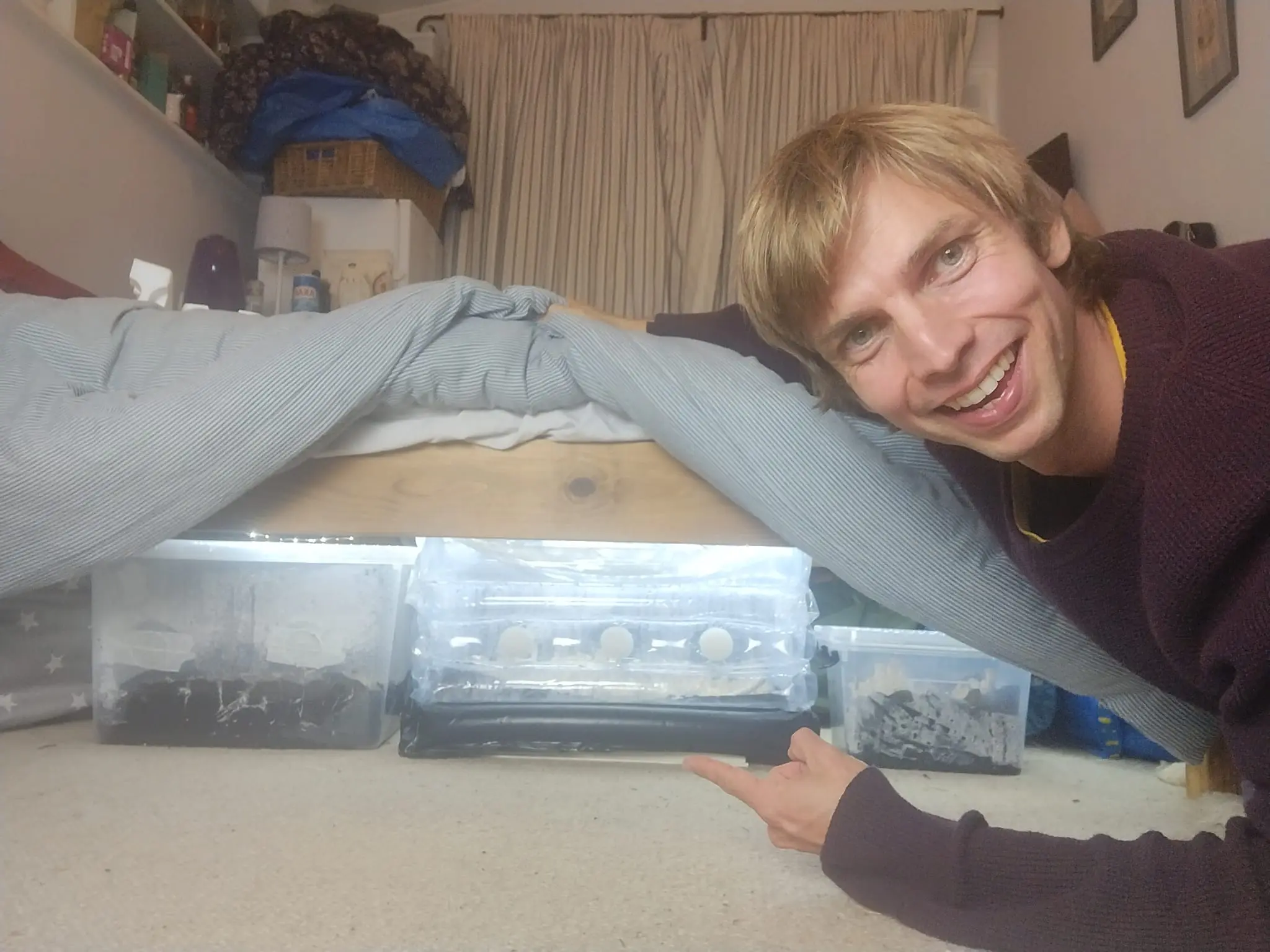 (picture) LED lights in use while growing under my bed
(picture) LED lights in use while growing under my bed
7. Fresh Air Exchange (FAE):
Mushrooms need fresh air circulation to flourish. Proper ventilation helps control carbon dioxide levels, prevents the buildup of excess moisture, and discourages the growth of mold or other contaminants. You can give your mushrooms adequate fresh air exchange by fanning the inside of your tubs with the tub lids 3-5 times a day.
If you want to get fancy you can use fans on timers, although this can dry out the substrate. I have found a lizard fogger (discussed above) brings in plenty of fresh air along with the humidity the mushrooms need.
8. Sanitation kit
Cleanliness is important when doing mushroom work. Most mushroom growers will use 70% isopropyl alcohol in a spray bottle to sanitise tools, hands, containers and work surfaces while growing. Many also do mushroom 'work' with their hands inside a Still Air Box (SAB), made from drilling two holes in a plastic tub. A SAB disrupts air flow making a clean zone for things like inoculation. If you do not use a SAB, a clean bathroom floor will do to get you started. If you catch the bug and want to grow lots of mushrooms a SAB is a must-have! (picture) drilling holes for a Still Air Box
(picture) drilling holes for a Still Air Box
9. Household Equipment
You'll need things which you've probably already got in your cupboards, like sticky tape, micropore tape (medical tape), scissors, a kitchen knife and bin/garbage bags. You'll also need occasional access to a drill.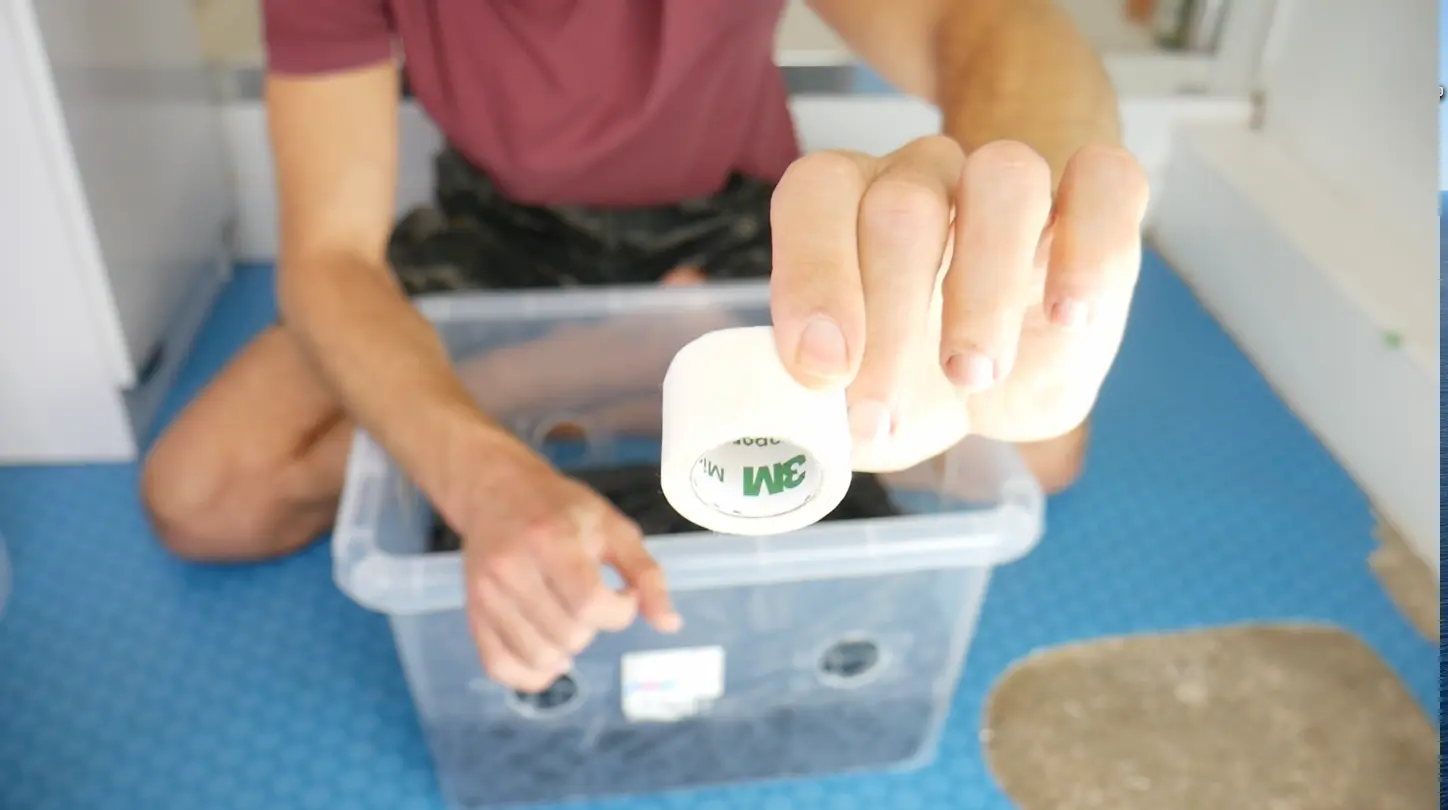 (picture) taping up airflow holes using micropore tape
(picture) taping up airflow holes using micropore tape
10. A Dehydrator
When you've successfully grown your mushrooms, you're probably going to want to store them for future use. The best way to do this and preserve optimum potency is to use a dehydrator.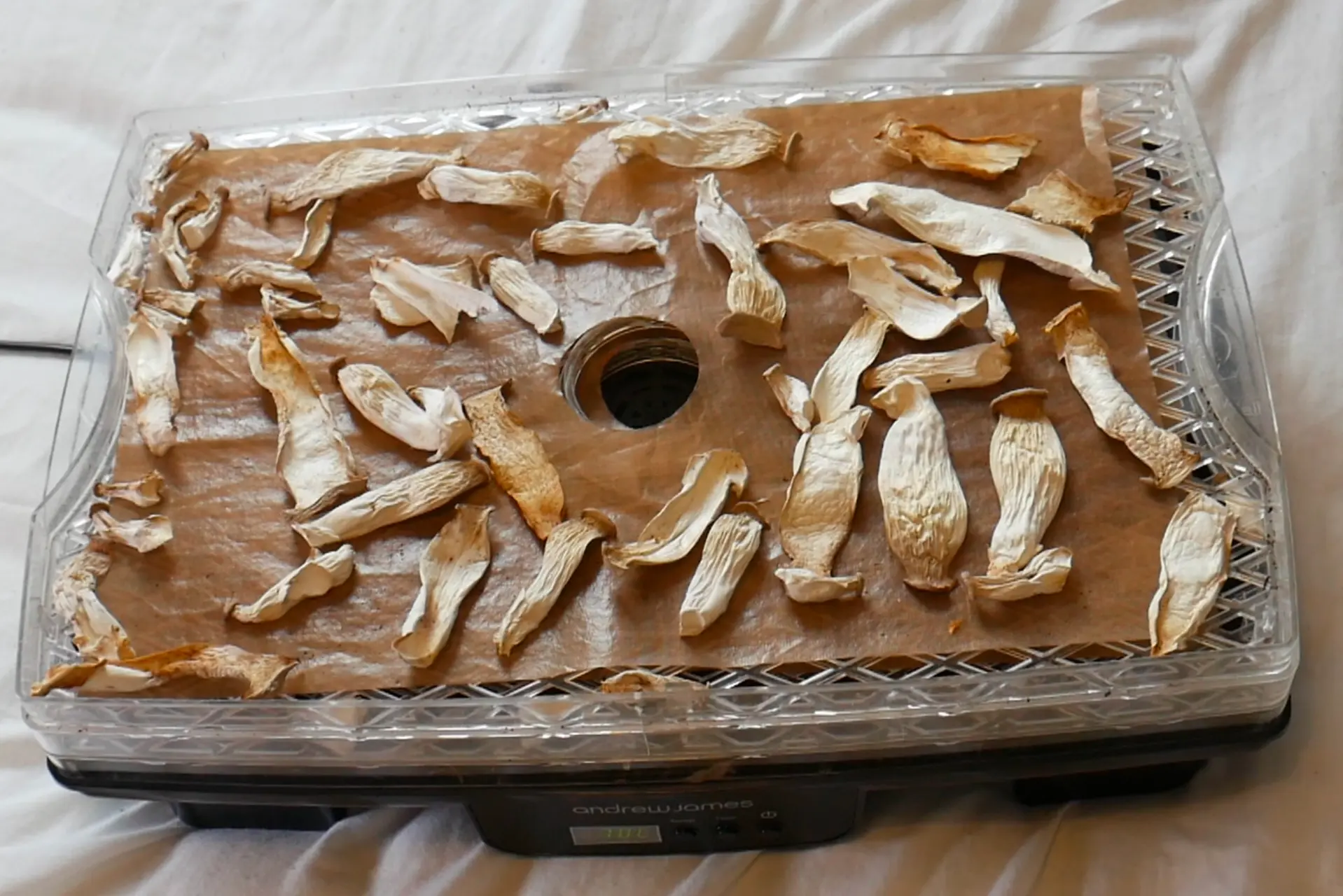 (picture: dried mushrooms in a dehydrator)
(picture: dried mushrooms in a dehydrator)
And That's All You Need!
As you can see, good kit is not hard to come by - and most of it can be reused many times over your growing career. If you'd like to get cultivating fast, with guaranteed fruits in under 10 weeks from start to finish, then do check out my course "Growing Mushrooms for Healing and Transformation" HERE. Here's to a world full of love, healing and mushrooms!
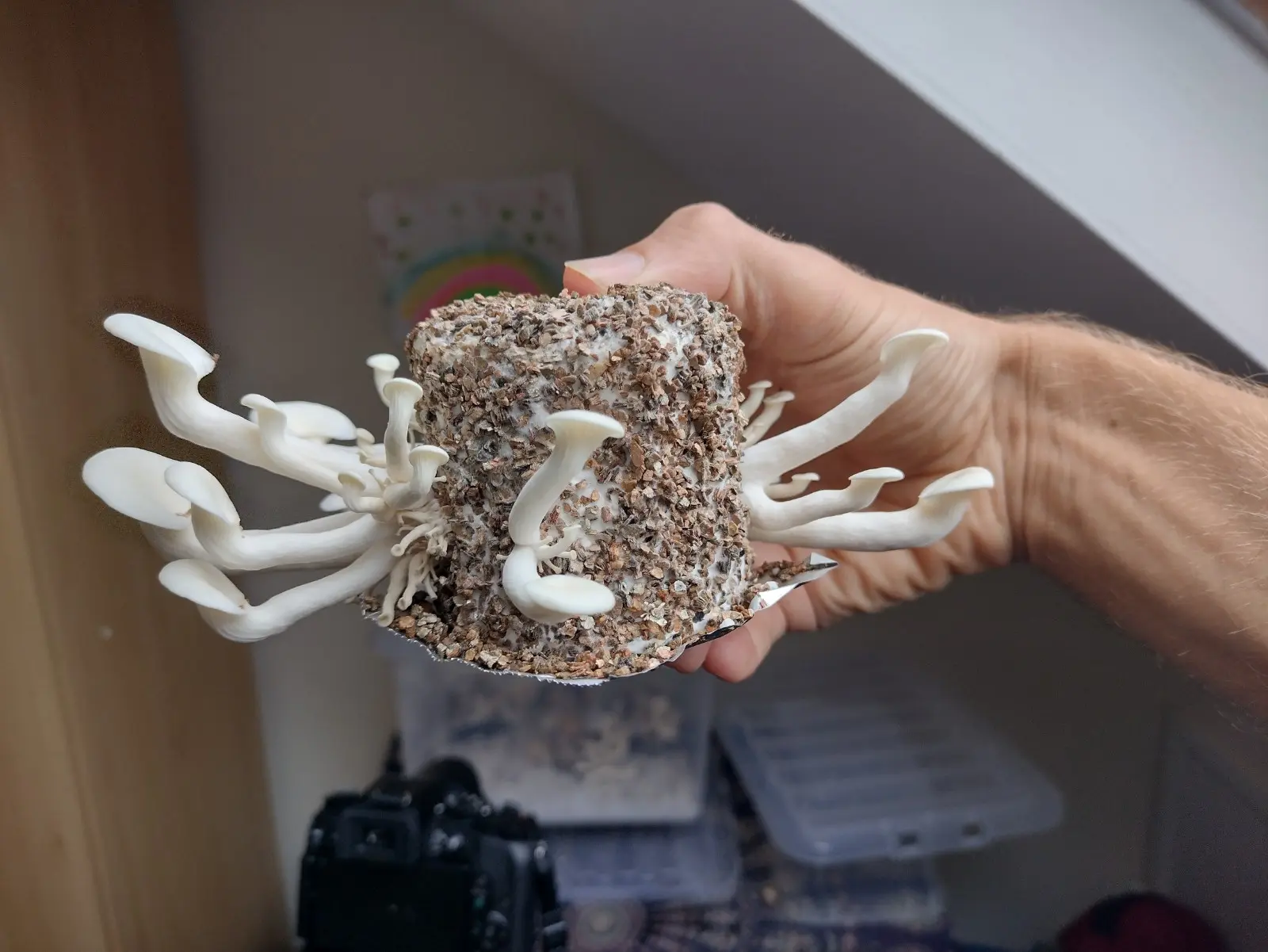 (picture: a low-tech mushrooms grow using the"PF Tek" method)
(picture: a low-tech mushrooms grow using the"PF Tek" method)
Is your home fit for growing mushrooms?
Take the free quiz to find out!

